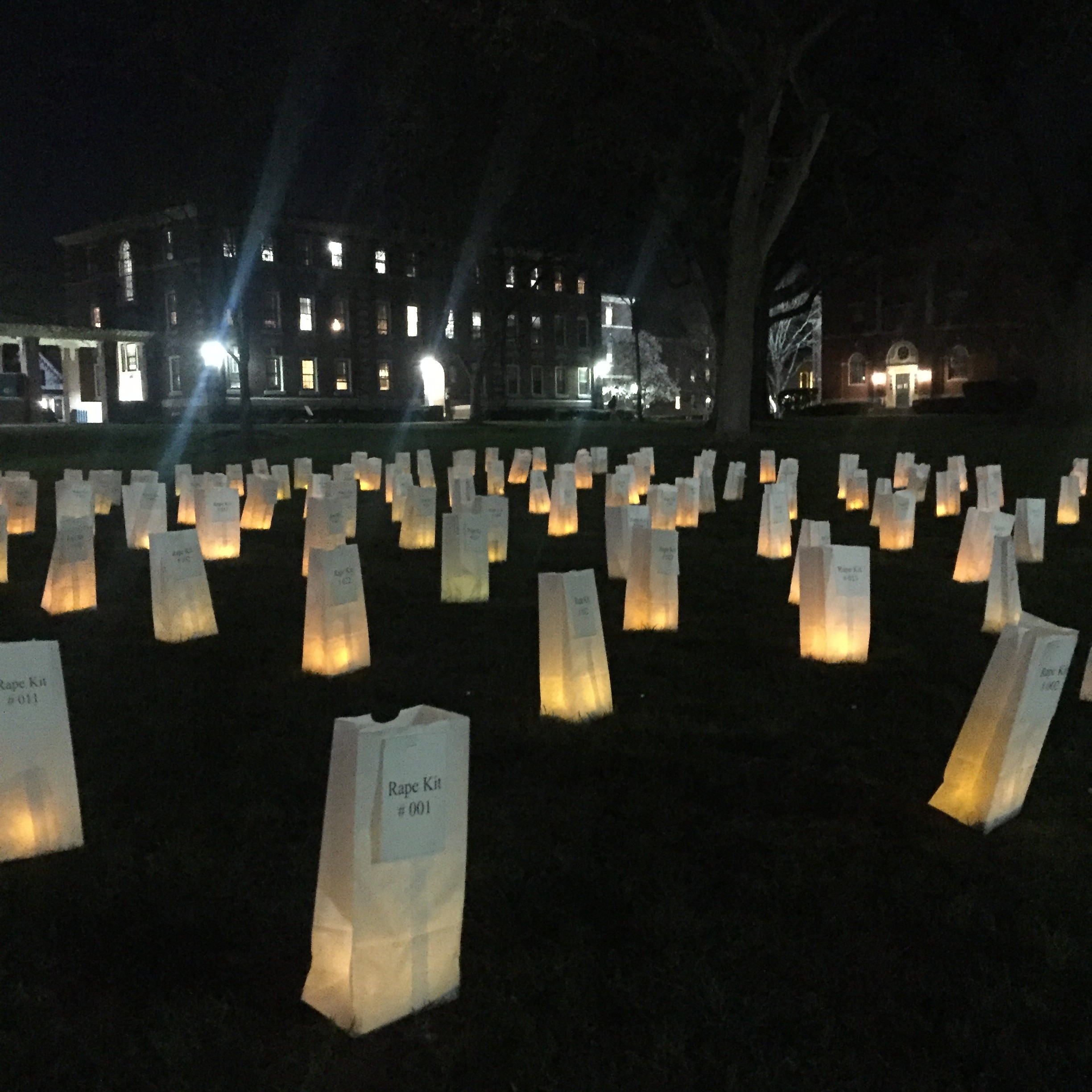Since 1983, the Violence Against Women sociology/ anthropology/ women’s studies course has coordinated the annual Violence Against Women Symposium. This year, the weeklong event beginning April 25 included events such as Rape Kit Graveyard on Chapel Field, Redefining Masculinity talk held in Balfour and Take Back the Night speeches in the Lyons Den.
The class planned a diverse range of events for this year’s symposium. “I think what we all really feel is distinct about this year is the breadth of representation. We wanted to directly discuss campus assault, domestic violence, marital rape, masculinity and more,” said Krittika Chatterjee ’18, a member of the class.
Professor Gabriela Torres of the anthropology department helps run the class and noted that students took initiative in raising awareness about the issues of violence against women. “What struck me about this year’s events was the sheer dedication that the students in the course demonstrated to teaching our community about what needs to be understood about violence against women,” Torres said.
Professor of sociology, Kersti Yllo who also helps to guide the class said, “[The class] created a range of engaging events and displays. What I saw in this year’s class that was different from the past was the level of knowledge and activist experience that the students came in with. There are also career possibilities that grow out of this work [which is] a situation that did not exist for an earlier generation of students.”
“We are so lucky to have a class that is chock full of activists and self-starters, which meant that a ton of ideas were floating around the room. We had some incredible leadership in Jessica Kruger ’17 and Hannah Zack ’18, who worked especially hard to keep everyone’s ideas both organized and represented,” Chatterjee said. “The professors truly took a back seat and let our creativity and initiative flow. I think it’s a testament to the power that students have and what we can accomplish on our own.”
While Chatterjee is open to discuss any issues that community members may have had with the displays or events, she believes it is important for people to see different opinions displayed openly. “We stand behind what we do, and our goal wasn’t necessarily to change minds—it was, and is, to start a conversation with people who don’t normally think about these issues,” Chatterjee said. “At the end of the day, so much of the mission for social justice is just enlightening people to what the problems are in the first place.”

